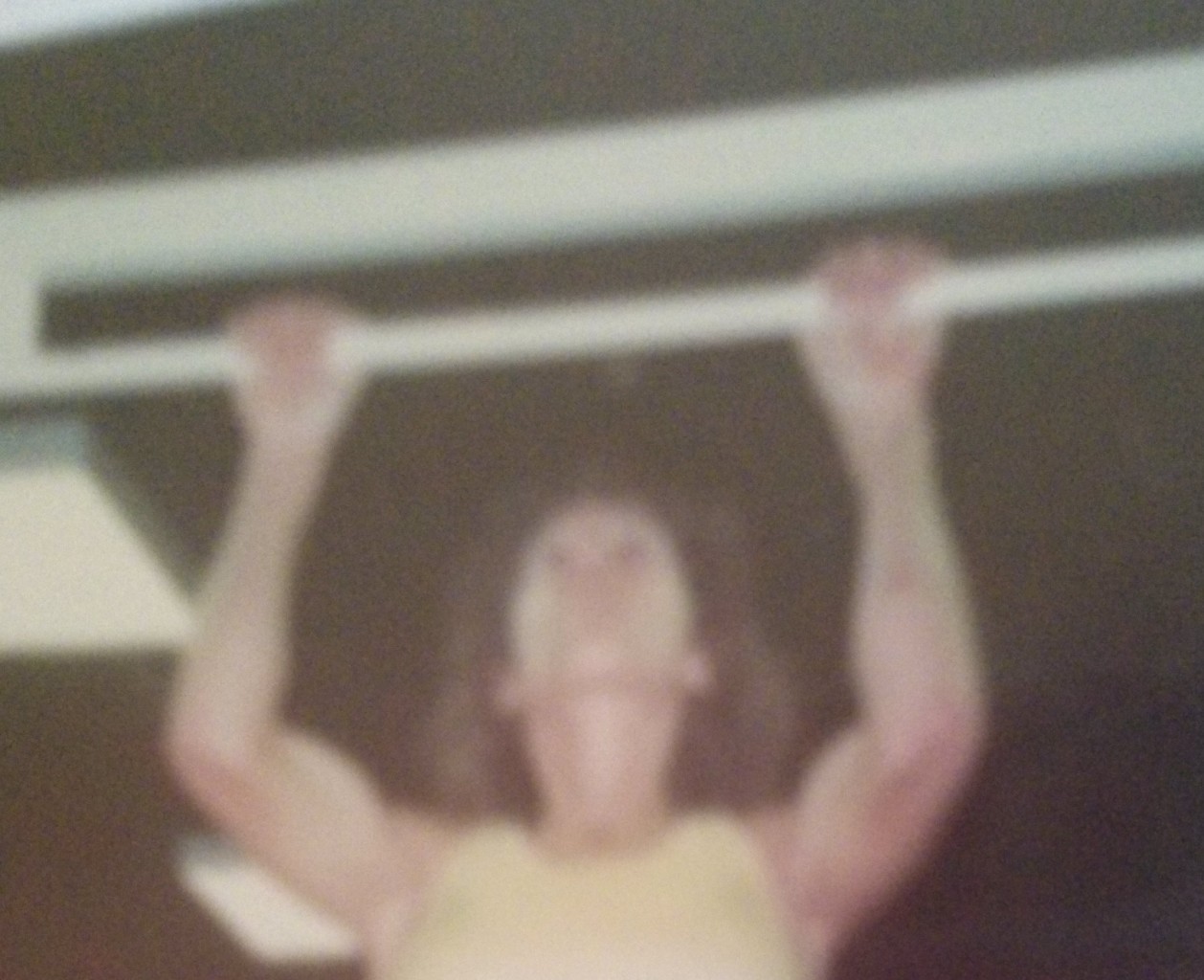When I was in school, in thicker and thicker glasses, then strong hard contacts, my studies mostly came easily to me. I realize now I was an over-achiever, always doing my homework right away, copying it over if it wasn’t perfect enough. I was also naturally athletic, doing the most pull-ups in the class in 6th grade, one more than the boy who had done the most before that. I was a skinny little monkey back then and remember this being no effort at all. I wish now I had done as many as I could, just to see what the number was!
As I moved to bigger groups, high school to college to graduate school to the corporate world, I found my talents weren’t all that unique, and I had to work harder to achieve. I was used to pushing myself from growing up with a demanding mother, and I often worked evenings and weekends just to be “good enough”. In the gym someone once asked me how many pull-ups I could do. Remembering that childhood triumph, I was embarrassed to admit I hadn’t been doing them for years, and probably could only do a few now. That day I started to push myself, eventually getting to the point of doing pull-ups with weights strapped around my waist. I’d had dreams of Tarzan-swinging for years, or climbing up the sides of buildings like Spiderman, and I wanted to be ready!
The photo is from over 20 years ago, when I was spending a lot of time in the gym, and running daily, sometimes twice a day. I still do a few pull-ups every morning, though I’d like to think I’m not as obsessive about it as I used to be. I’m learning that doing the most I can possibly do is not always necessary, and is certainly not fun. When I first started vision improvement about 12 years ago, I was determined to progress as fast as possible — I had all those decades of wearing strong lenses to make up for!
Well, I quickly learned that attacking my vision practices with fierceness wasn’t the correct approach, and it just left me frustrated at my lack of consistent improvement. Like the old tortoise and hare fable, slow and steady wins the race.
One of my students is half my age. To me, he is going about vision improvement the right way. He also started with a very strong prescription, and first got glasses shortly after he entered school, so hasn’t spent much of his life without them. He’s implementing new habits slowly, and sticking to them. He doesn’t put on his glasses when he first gets up, instead walking to the nearby gym and working out without them. He periodically takes his glasses off during the work day to rest his eyes, and is starting to enjoy interacting with friends with no glasses on his face. He doesn’t have a reduced prescription yet, but we are both pleased with his healthier vision habits, which he has stuck to during some big life changes like a trans-Atlantic move.
So I’d like to learn from my student here and keep the focus (ha!) on improving my own pretty good vision by regular practice, not just when I get around to it. I am not as consistent about using the eye chart as I’d like to be, and that will change, this week. I’m traveling to the southwest of the USA shortly, and bringing an eye chart with me, for nightly practice of 1/2 hour or so. I don’t need to be a fanatic about it and do hours and hours of palming, though I will do some, and some Long Swings too. Like I tell my students, some practice is better than no practice, and baby steps are better than no steps at all. Slow and steady will get me there, and you too, whatever your goal is.
I wore strong glasses, then contact lenses, from age 5 into my 40s. While making many mistakes, eventually l learned how to improve the way I use my eyes and to see in a more relaxed, healthy manner. It is my pleasure to coach others to do the same. Visit me at https://NancyLNeff.com.
